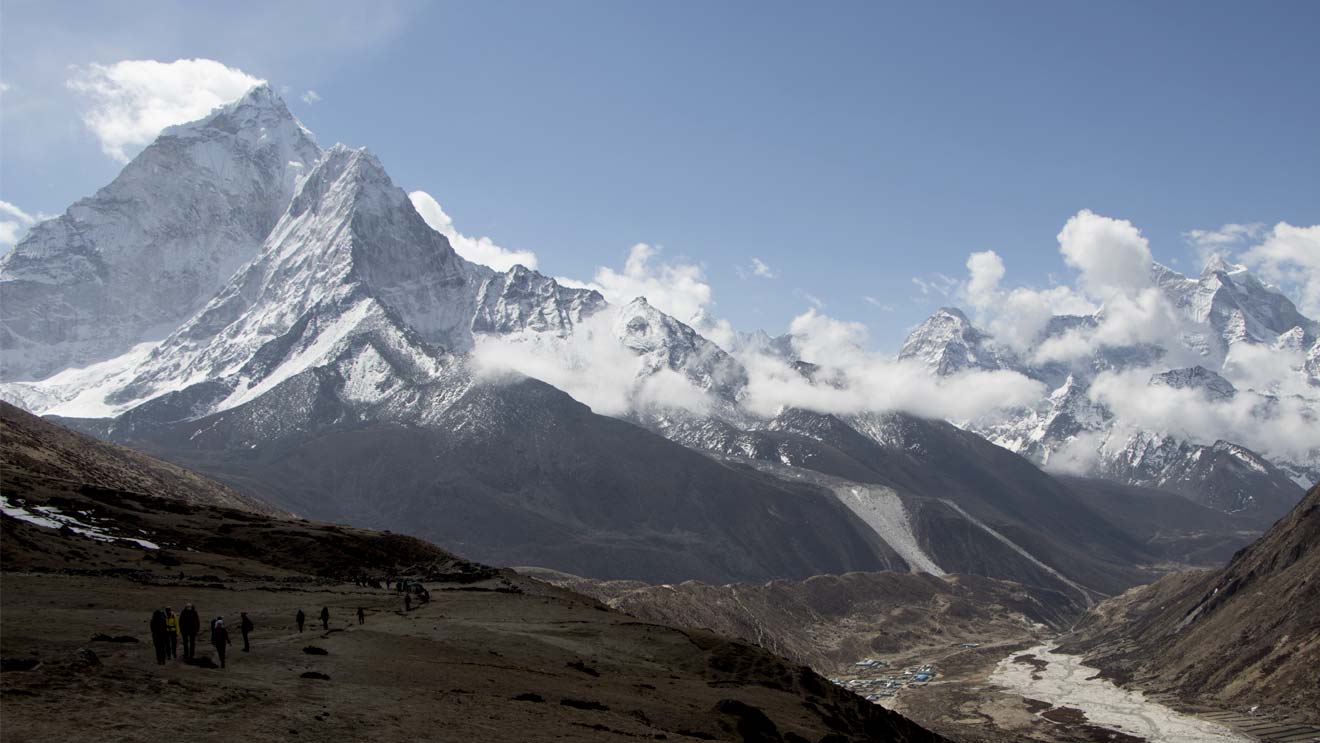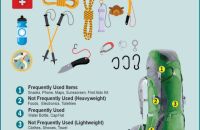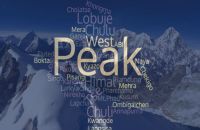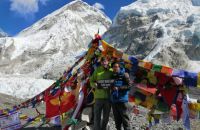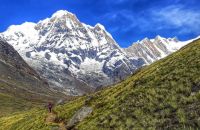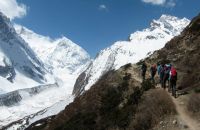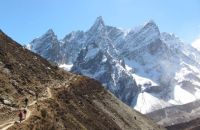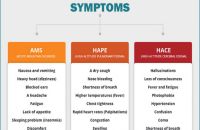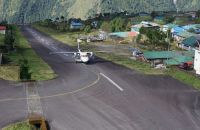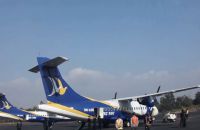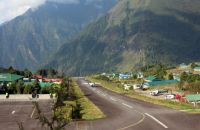Talk with our local travel specialist who can help organize your trip.
Climate of Nepal
Table of Content
You only have to spend a few days trekking to realize that it’s not unheard of to set out in the morning under a sky of toned ocean blues with views of the mountains that sparkle in their clarity. But just hours later, moody black storm clouds might be unleashing sheets of snow and you may find yourself hurrying along the trail in search of shelter.
The weather in Nepal – and in the mountains in particular – is rarely ‘boring’. This means that when planning a trip to Nepal it’s important to know a little about Nepal’s different climate seasons and the impact the weather might have on your trip.
The climate of Nepal can be loosely divided into three different seasons. The cool and dry, the hot and dry and, finally, the wet season or monsoon. Let’s take a more in-depth look at each of them here and how Nepal’s climate seasons might affect your holiday.
The Cool, Dry Season
We’ll start by looking at the cool and dry season, which runs roughly from October to early December. Overall, for much of Nepal this is the best time of year to travel with the first part of this season (October and early November) generally considered the absolute best time to trek.
October & November
The skies throughout the cool and dry season are normally crystal clear, the visibility is excellent and temperatures are warm in the valleys and lowlands and cool to cold up high. Whether you’re trekking to Everest Base Camp, spying tigers in the jungles of Chitwan or rafting down a river, this is a superb time to be holidaying in Nepal.
However, for every positive there is almost always a negative and the same rings true here. October and November is by far the busiest time for tourism in Nepal. The main trekking trails can be packed, safari lodges in the national parks can be booked solid and the Kathmandu Valley and Pokhara are awash in tourists. As always, this can mean higher accommodation and flight prices.
December to February
December to February is also a good time to be in Nepal. Trekking trails are much quieter than in October and November and visibility is still excellent. However, it can be bitterly cold up high (you’ll even need a warm jumper in Kathmandu), some passes can be snowed in and it starts to get dark around 5.30pm which can make camping treks particularly trying. If you trek at this time make sure you’re well equipped. Away from the mountains, the national parks are perfect at this time of year, but it can be a bit too cold to make river rafting truly enjoyable.
The Hot, Dry Season
The hot, dry season runs from around March to May. During this period heat and humidity is fast building up on the lowland plains and in the Kathmandu Valley (though the raised elevation of Kathmandu and Pokhara mean that they never feel quite as deadeningly hot as say Delhi in India at the same time). March and April remain popular times to travel around Nepal, but by May the number of visitors in the country is fast trailing out as the climate becomes hotter and fiercer.
March & April
March and April are popular times to trek. In fact, after the October and November period this is the second most popular trekking season in Nepal. It’s much warmer up high which can make for more pleasurable days (and nights!) at altitude and April is the time for the extraordinary blooming of the rhododendrons, which can turn mountain slopes aflame in purples and reds in many areas. On the negative side though it can be very hot and humid at lower trek elevations. This is also the time when the heat haze is building up and the air not as clear as at cooler times of year. Kathmandu and the national parks are hot but it’s still a reasonable time to travel. Wildlife gathers around waterholes in the parks and is easier to see.
May
The first pre-monsoon storm clouds start to build up in May and whether in the lowlands or the mountains you’ll likely get soaked by an increasing number of intense thunderstorms. By late May the thunderstorms are becoming ever more frequent and it can get dangerously hot at lower levels. May is however a superb time to trek areas in the Himalayan rain shadow such as Upper Mustang and Dolpo, which will have pleasant temperatures and generally good mountain views.
The Wet Season
By June the wet season, or monsoon, is really starting to gather strength and make its presence felt. In Nepal the monsoon, with its torrential rain and massive thunderstorms lasts roughly from late-June to mid-September. In general this is a bad time to be in the country. Many trekking and wildlife lodges will be closed, mountain views are utterly obscured and walking trails (and even the roads of Kathmandu) become a quagmire of mud and leeches. However there are exceptions, and places such as Upper Mustang which lies in the Himalayan rains shadow can be trekked at such times.
Climate Change In Nepal
The climate of Nepal, like the climate of much of the world, is changing. Himalayan glaciers are melting at terrifying speeds, farmers can no longer accurately predict rainfall patterns and it can be blazing hot when it should be raining and soaked when it should be dry. This is starting to throw the standard travel patterns out of the window and no matter what time of year you’re trekking you should be braced for sudden, dramatic weather changes. This is especially the case in September and April-May. In recent years a number of very severe storms have lashed Nepal in April and May and the resulting heavy dumps of snow has left some trekkers trapped on the wrong side of mountain passes or worse.
Avg. Rainfall In Nepal By Month
Guides
Almost without exception local people know the mountains better than you do and a good, experienced guide should have a pretty good idea of what the days weather has in store for you just by looking at the cloud and wind patterns before you set out. In most cases, when so-called ‘freak’ weather (in fact there’s rarely such a thing as freak weather in high mountains) has dumped heavy snow on passes it’s invariably been tourists trekking alone who have gotten into trouble and even lost their lives. For this reason we would always recommend trekking with an experienced guide.
- Written by: Naba Raj Amgai
- Updated: Wednesday May 23, 2018

